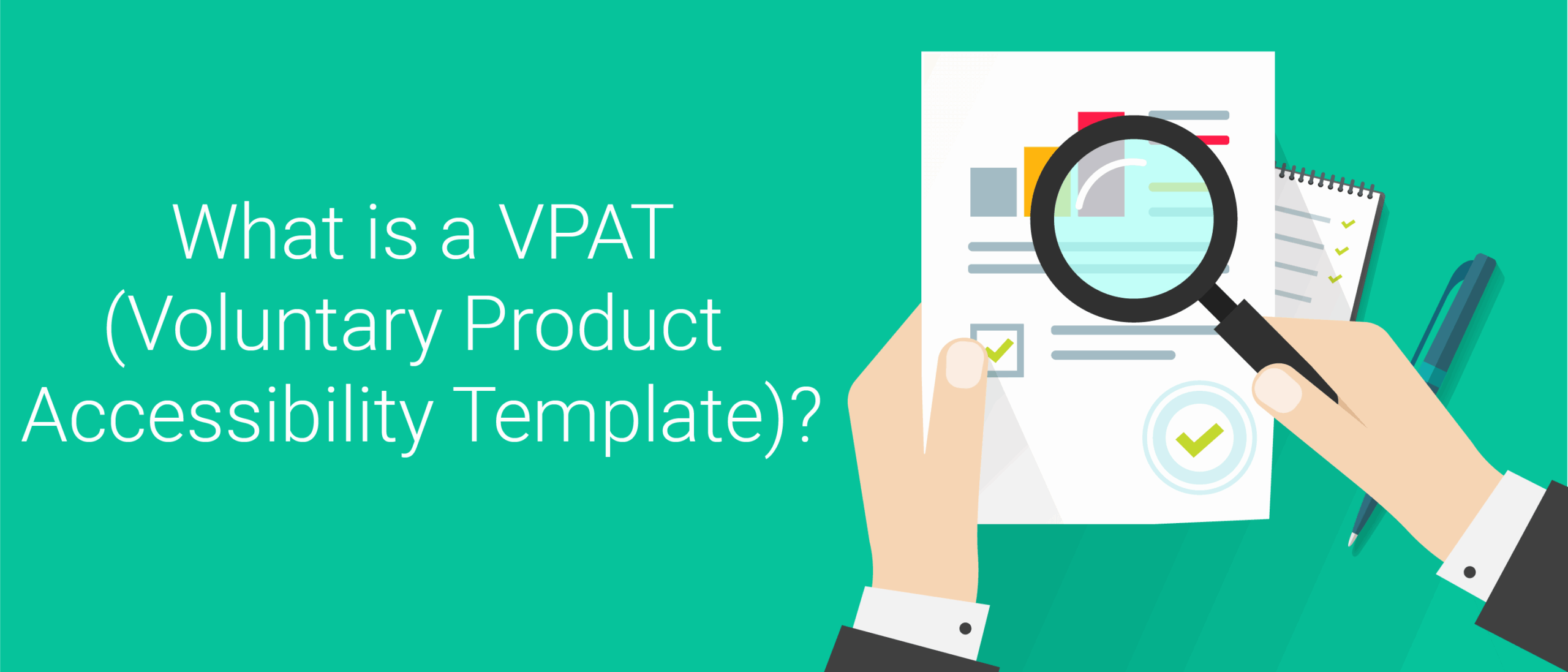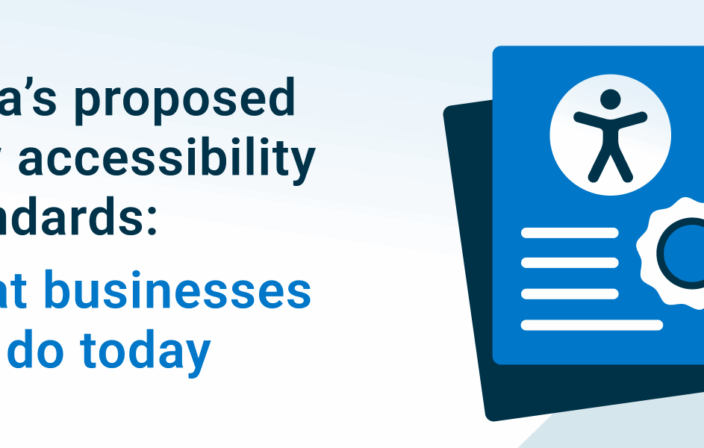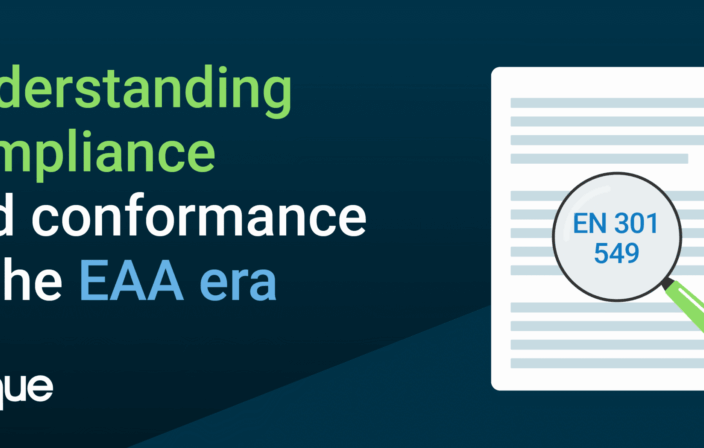Have you been asked to provide information about the accessibility of your digital product by a commercial customer or a government agency? Do you know how to provide a report on your product’s accessibility?
You’ll need to create an Accessibility Conformance Report (ACR) that documents the product’s conformance with applicable accessibility guidelines using the Voluntary Product Accessibility Template, commonly known as the VPAT. The question that many companies face is, “how do I create an ACR that is going to present my product’s accessibility information accurately and in a way that my customers can understand?”
The path to creating an accurate, informative ACR is not complex, but it requires you to rigorously and honestly assess your product’s accessibility and then present your findings in the VPAT. Let’s discuss the journey you’ll take when planning and creating an ACR.
What is an ACR?
An ACR is a snapshot of how your product conforms at a point in time to the Web Content Accessibility Guidelines (WCAG) and other relevant accessibility standards. It provides potential customers with information about the accessibility of your product and alerts them to potential accessibility blockers.
You may have heard of an ACR referred to as a VPAT. Many people use the terms “VPAT” and “ACR” interchangeably. They are related, but different.
The VPAT is the template available on the Information Industry Technology Council (ITI) website. When the VPAT is completed with information that documents a product’s conformance with accessibility standards, then it is an ACR.
An ACR for any product should not just be a response to a request from a potential customer. It should be part of the overall marketing approach for any digital product. By being transparent about the current state of a product’s accessibility, you demonstrate an awareness of the importance of including all people in your customer base and a commitment to achieving that inclusion. If your company only prepares an ACR when asked, how many customers are going to go to your competitors who offer an ACR without asking?
The ACR begins with basic information about your product such as the name, description, and version number, as well as the date of the report, which may correspond to the release date of a version or the date an accessibility assessment was completed. The ACR also lists the accessibility standard(s) your product is being measured against, states the conformance levels for each criterion within the standard(s), and provides an explanation of why a particular conformance level is stated for each criterion.
Every ACR requires a statement of conformance with WCAG. There are 3 versions of WCAG you can select for the ACR: 2.2, 2.1 or 2.0. Two other accessibility standards may be included in the ACR:
- Section 508 – Section 508 of the Rehabilitation Act requires federal agencies to make all of their electronic and information technology accessible to people with disabilities. Section 508’s accessibility standards provide specific requirements that any information or communication technology (ICT) product must meet to be purchased by the federal government. Many state and local governments also require any ICT that they are considering in procurement to meet these standards. With that in mind, if you have customers (current or potential) in the U.S. public sector, consider including the applicable Section 508 standards in your ACR.
- EN 301 549 – Similar to Section 508, the European Union’s EN 301 549 regulations provide accessibility requirements for all digital products, such as websites, non-web software (including mobile apps), and electronic documents. If the product will be marketed in the EU, your ACR should include EN 301 549.
Section 508 and EN 301 549 also have accessibility requirements for computers and other digital hardware, so if a product includes hardware, conformance with these requirements is documented in an ACR.
The VPAT lists all WCAG accessibility requirements as well as Section 508 and/or EN 301 549, if desired. For each individual criterion or requirement, there is space to state the product’s “Conformance Level” and another to include any “Remarks and Explanations” to justify or describe why that conformance level was assigned.
Conformance Levels
For each criterion or requirement in an accessibility standard, the ACR must state a conformance level to indicate how well the product satisfies the requirements of that criterion. The following conformance levels are used:
- Supports: The functionality of the product meets the criterion without known defects or there is an alternate means available to comply with the criterion.
- Partially Supports: Some functionality of the product does not meet the criterion.
- Does Not Support: The majority of product functionality does not meet the criterion.
- Not Applicable: The criterion is not relevant to the product.
Remarks and Explanations
For each criterion, it is helpful to include a brief explanation that justifies the conformance level. For those criteria with a conformance level of “Partially Supports” or “Does Not Support,” the explanation often includes a list of major accessibility issues identified as relevant to the criterion found by the assessment. These explanations provide customers and prospects with context around any accessibility concerns.
Assess the Accessibility of Your Product
Now you know what an ACR is, the next step is to perform an accessibility assessment of your product to provide an evidence-based foundation for the determination of the product’s conformance with each WCAG success criterion (and the Section 508/EN 301 549 requirements if included). If your company has accessibility experts on staff, this assessment can be done in-house. Many companies elect to have a neutral third-party perform the accessibility audit. That company often creates the ACR based on the audit results as a deliverable of the audit.
The scope of the audit must include a representative sample of the content and functionality of your product. A good assessment will include key functionality and content to provide an accurate appraisal of the accessibility of your product.
An accessibility assessment often creates an opportunity to improve the accessibility of your product by uncovering previously unknown accessibility issues. Take advantage of this opportunity to fix the most significant issues before the ACR is written.
Write an Informative, Understandable ACR
With the assessment completed (along with any remediation of accessibility identified by that assessment), it’s time to complete the VPAT. It’s very important to be upfront about where your product stands in its accessibility journey. Most products have accessibility issues–acknowledge them. The ACR for a product is part of the marketing material for that product, and part of its purpose is to show your commitment to accessibility and transparency. Demonstrate that commitment by providing a forthright and honest statement of the product’s current accessibility in the ACR.
A part of being transparent is presenting all of the information in the ACR using language that, whenever possible, is understandable by people who are not familiar with accessibility, coding, and/or the particulars of digital content. If customers don’t understand the accessibility issues that you cite when explaining the basis for a conformance level, how will the ACR be a useful tool in their decision to purchase the product? Each accessibility issue needs to be presented in a way that’s easy to understand what the problem is, who it affects, and how.
Keeping the ACR Updated
When you complete an ACR for the product and make it publicly available, that’s not the end of the process:
- Most products evolve over time to meet the ever-changing needs of a dynamic customer base. Update the ACR periodically so it accurately conveys the accessibility of your product as it’s available now.
- As the product changes, its accessibility will also change. An ACR update may need to reflect that you fixed some accessibility issues, while other updates may be needed when you issue a new version of the product.
- When a new version includes new functionality or content, a new accessibility assessment may be necessary to provide the basis for the updated ACR.
Summary
Completing a VPAT to produce an ACR is a key milestone on your accessibility journey. An ACR for your digital product embodies your commitment to inclusion, accessibility, and transparency. An accessibility audit provides the foundation for an evidence-based ACR that accurately and honestly presents the state of the product’s accessibility. Using plain language in the ACR provides all of your customers with a clear picture of your product’s accessibility. By consistently updating the ACR, you keep your customers informed as you address any accessibility issues and add new, accessible functionality and content to the product.
At Deque, we are here to support you on your accessibility journey, including assessing the accessibility of any digital product and drafting an ACR for that product based on that assessment.




